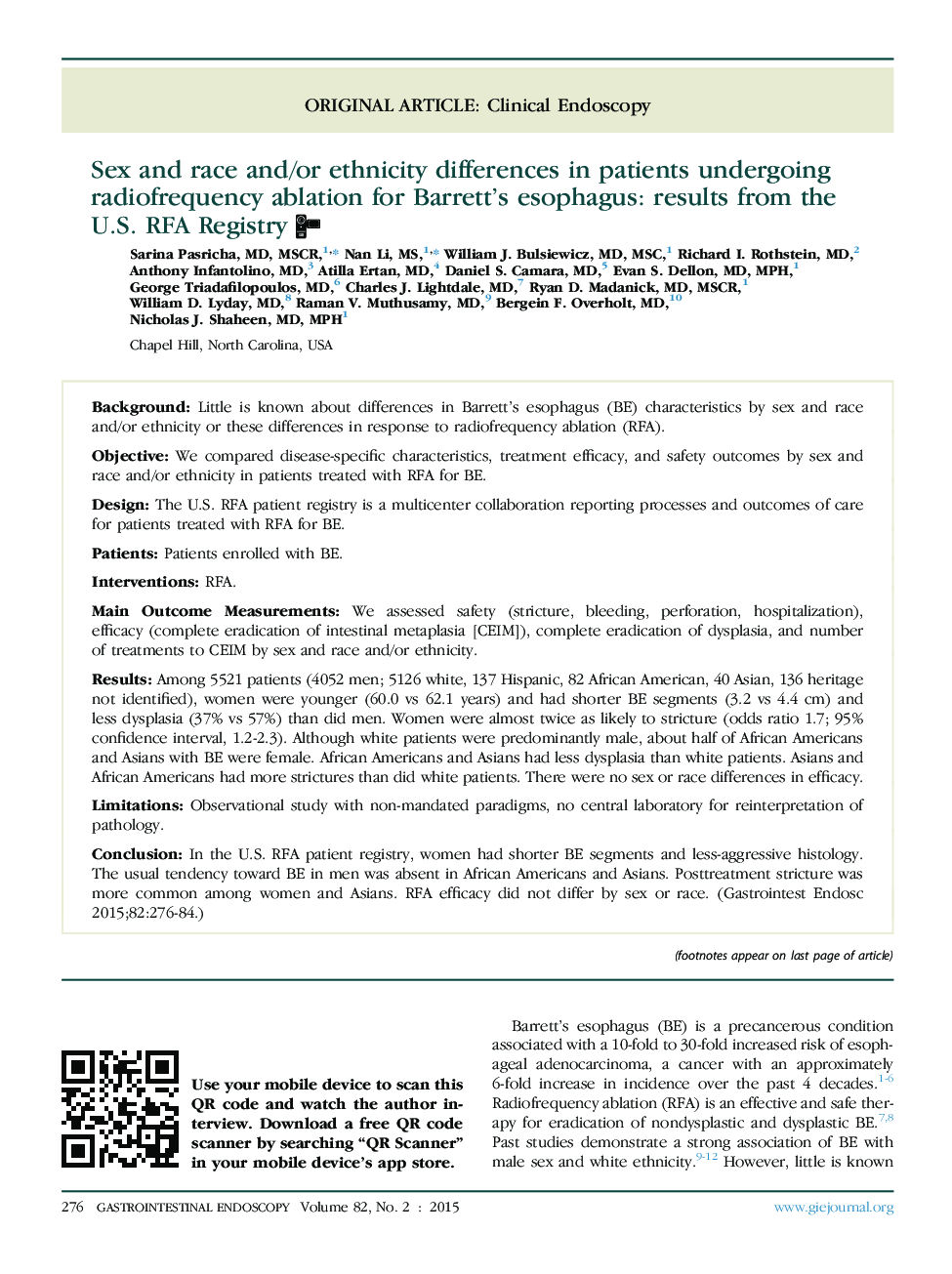| کد مقاله | کد نشریه | سال انتشار | مقاله انگلیسی | نسخه تمام متن |
|---|---|---|---|---|
| 6097706 | 1210292 | 2015 | 9 صفحه PDF | دانلود رایگان |

BackgroundLittle is known about differences in Barrett's esophagus (BE) characteristics by sex and race and/or ethnicity or these differences in response to radiofrequency ablation (RFA).ObjectiveWe compared disease-specific characteristics, treatment efficacy, and safety outcomes by sex and race and/or ethnicity in patients treated with RFA for BE.DesignThe U.S. RFA patient registry is a multicenter collaboration reporting processes and outcomes of care for patients treated with RFA for BE.PatientsPatients enrolled with BE.InterventionsRFA.Main Outcome MeasurementsWe assessed safety (stricture, bleeding, perforation, hospitalization), efficacy (complete eradication of intestinal metaplasia [CEIM]), complete eradication of dysplasia, and number of treatments to CEIM by sex and race and/or ethnicity.ResultsAmong 5521 patients (4052 men; 5126 white, 137 Hispanic, 82 African American, 40 Asian, 136 heritage not identified), women were younger (60.0 vs 62.1 years) and had shorter BE segments (3.2 vs 4.4 cm) and less dysplasia (37% vs 57%) than did men. Women were almost twice as likely to stricture (odds ratio 1.7; 95% confidence interval, 1.2-2.3). Although white patients were predominantly male, about half of African Americans and Asians with BE were female. African Americans and Asians had less dysplasia than white patients. Asians and African Americans had more strictures than did white patients. There were no sex or race differences in efficacy.LimitationsObservational study with non-mandated paradigms, no central laboratory for reinterpretation of pathology.ConclusionIn the U.S. RFA patient registry, women had shorter BE segments and less-aggressive histology. The usual tendency toward BE in men was absent in African Americans and Asians. Posttreatment stricture was more common among women and Asians. RFA efficacy did not differ by sex or race.
Journal: Gastrointestinal Endoscopy - Volume 82, Issue 2, August 2015, Pages 276-284